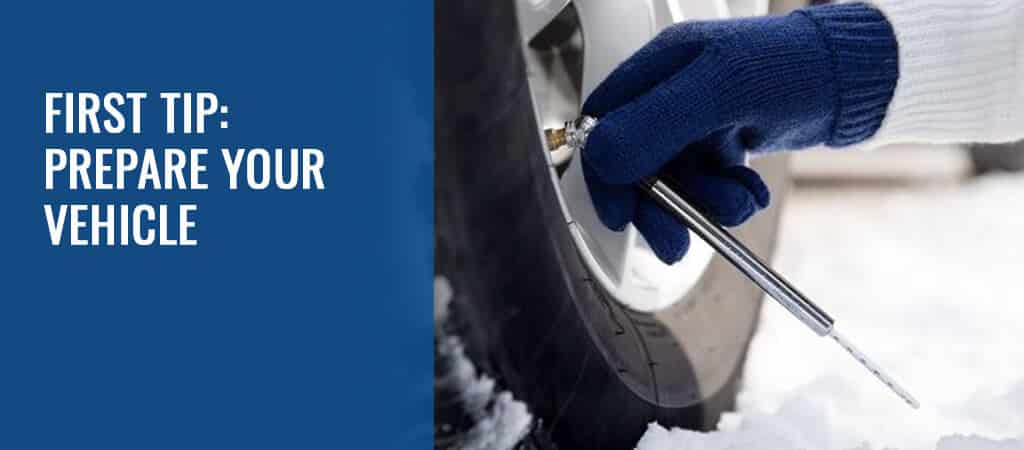Whether your winter involves shutting yourself up as much as possible or necessitates a commute which you just can’t quit, winter weather is an undeniable force across Canada.
Anyone who has lived in Canada knows that the winter brings many challenges and dangers. For motorists on Canada’s wintery roadways, there are all sorts of hazards which the cold, snow, and limited visibility can conjure.
To make sure everyone stays as safe, warm, and injury free as possible, we’ve compiled a selection of highly actionable tips which you can put to work this winter and any winter to come.
First Tip: Prepare Your Vehicle

The frozen Canadian winter is no time to be having vehicle trouble. It’s important to take some steps to make sure your vehicle is in good working condition, as well as take measures to winterize your vehicle.
An overall tune up is a good idea as winter approaches. Have everything looked over by a qualified mechanic and get their seal of approval that everything is in working order. Have your oil change, fluids topped up, and attend to any mechanical issues like brakes or power steering.
If you’re in a particularly mountainous or snowy area, you may also want to consider putting on snow tires for the winter.
Things that are mere luxuries in the summer become necessities in the winter! Be sure your windows can roll up completely and don’t put off getting that heater fixed any longer.
Second Tip: Increase Your Following Distance

The distance at which you follow the car in front of you has a huge impact on your available reaction time. Adding a little bit more of a buffer can be the difference between a serious accident and a happy commute.
It’s always a good idea to leave a very generous following distance when driving in any conditions. But in the winter months, when roads are slick, visibility is low, and unusual circumstances can appear suddenly, it’s a good idea to give some extra space between you and the person ahead of you.
Third Tip: Drive Carefully And Slowly
Take it easy when you’re hitting the roads in the winter months. Especially if the conditions are looking bad outdoors, take your time to drive with as much care as slowly as possible.
Driving slowly increases your reaction time and reduces the chance of losing control of the vehicle or colliding with an unexpected obstacle.
Don’t rush! A little bit of patience could save your life.
Fourth Tip: Learn How To Recover From A Skid
Wet or icy roads can make it more likely for your car to skid out.
It’s important to know what to do should you find yourself in a skid. However, it’s also important to know that the way you drive affects the likelihood of skidding.
The best way to avoid skidding is to drive carefully and slowly. Accelerating aggressively, braking too hard, oversteering, and driving too fast can all contribute to skidding.
If you find yourself in a skid, here’s what to do:
- Eliminate the cause: If you know what initiated the skid (such as accelerating too aggressively,) stop doing that action.
- Steer: Keep both hands firmly on the steering wheel. If your back tires or all tires are skidding, you want to gently “steer into” the skid, steering in the direction of the skid to help the vehicle correct. If the front wheels are skidding, keep the steering wheel straight.
- Brake: Vehicles equipped with ABS can brake while steering. Braking while steering with the advice in step #2 can help you regain control of the vehicle.
Do Not Use Cruise Control

In inclement conditions, the convenience of cruise control can cause a catastrophe.
It’s important to have full control over your vehicle when driving in the winter. If you happen to begin hydroplaning or hit a patch of ice, cruise control will cause the vehicle to rapidly accelerate as it attempts to maintain a constant speed.
This can result in some pretty devastating accidents!
Fortunately, the solution is simple. Just save those cruise controlled drives for when the weather is fine.
Winter Driving FAQs
1. Does comprehensive auto insurance cover sliding on ice?
Yes. Many comprehensive auto insurance policies or collision policies will cover sliding on ice. Check the terms of your insurance policy.
2. How many accidents are caused by ice in Canada?
As many as 30% of all automobile accidents in Canada occur on snowy or icy roads.
3. Why do they put sand on the road after an accident?
Sand is used to help improve traction on slick spots of the road. It can help motorists retain control of their vehicle and avoid accidents.



